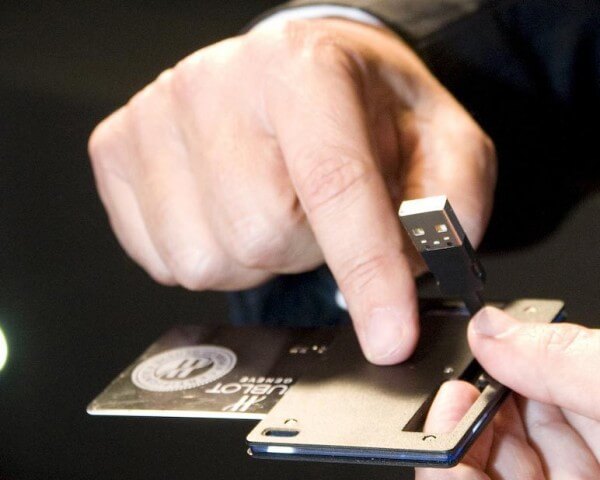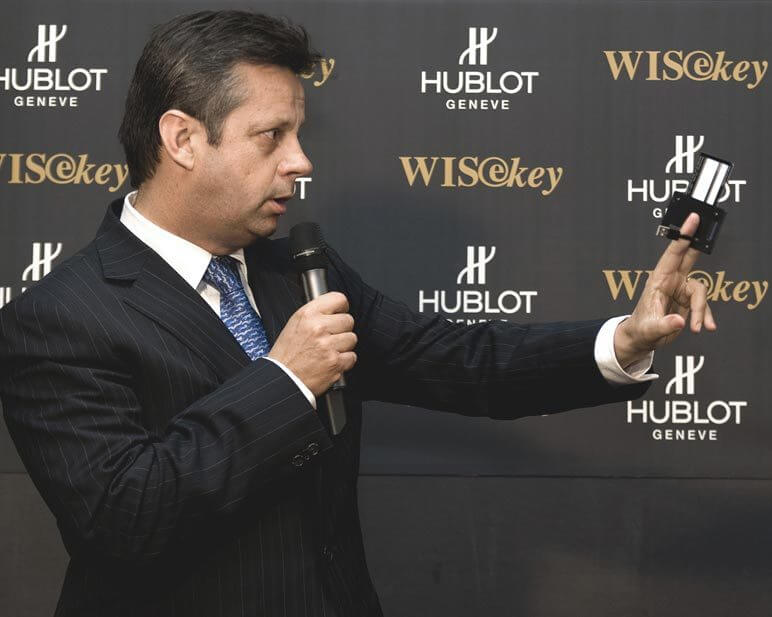“When I saw the first fake Hublot watches, I must admit to feeling rather proud,” confessed Jean-Claude Biver, CEO of the brand which was recently acquired by LVMH, speaking at Baselworld. “It meant we had achieved international brand status, that we were desirable enough to be copied. However, as the brand has grown more successful, counterfeiting has increased too, and has now reached such proportions that it needs to be taken very seriously. We invested CHF 2 million to tackle counterfeiting in 2008. Today, we can see that we need to invest more.”
A passport for watches
Hence Hublot, which has built a tradition that looks squarely to the future and cutting-edge technologies, has announced a world-first in terms of product traceability. And this time the brand is using one of counterfeiting’s own favourite channels: the internet. “This is complex technology to produce but simple technology to use,” Jean-Claude Biver continued. “Working in partnership with WISeKey, we have developed an electronic guarantee. It contains the watch’s unique ID code and gives access to a reserved space on the Hublot website. In the same way that virtually everyone has a passport, our watches will be given their own personal data.”
So what does this mean in practical terms? As from September, all genuine Hublot watches will be equipped with a SmartCard that uses cryptographic technology developed by WISeKey. This card combines with a reader, supplied by the retailer at the time of the sale. The customer uses this reader to connect to a reserved space on the Hublot website, which will authenticate the watch by comparing information on the card with information supplied by Hublot. If the two don’t coincide, the watch is counterfeit and access is blocked. Customers who have purchased a Hublot watch within the last 25 years, and who wish to have it certified, can return it to the company’s head office, where it will be serviced and attributed a random authentication code.

A pioneering role
Said Jean-Claude Biver: “The one thing we’re certain of with this new ID card is that customers who wish to purchase a Hublot watch will definitely be buying the genuine article, not a copy… unless of course they go out of their way to buy a fake. The worst-case scenario for a brand such as ours is to see our customers taken in by copies for which they paid the same price as for a genuine Hublot watch. Now we have the answer. As for cheap copies, which unfortunately always find buyers, the usual weapons still prevail, from legal action to activities by the Federation of the Swiss Watch Industry and customs seizures. For the moment, Hublot can only protect its loyal customers.”
Has Hublot acquired the exclusive rights to WISeKey’s technology? “Certainly not,” replies Jean-Claude Biver. Even though some brands aren’t yet “mature” enough to adopt it, to borrow an expression from Carlos Moreira, CEO of WISeKey, the fight against counterfeiting is sufficiently important for this type of technology to spread. “What matters for us is to assert our role as a pioneer in this field. And so much the better if this type of solution should become the standard,” concluded Hublot’s CEO.














